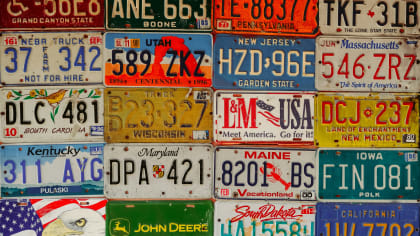NOT YOUR FATHER'S DIESEL
This article is from our archives and has not been updated and integrated with our "new" site yet... Even so, it's still awesome - so keep reading!
Published on Sat, May 10, 2003
By: The LACar Editorial Staff
NOT YOUR FATHER'S DIESEL
By BILL WRIGHT
How interested would you be in maybe buying a diesel-powered car? I would wager that most people would answer, "not very". That would pretty much have been my response too before attending the Eight Annual Diesel Engine Emissions Reduction (DEER) Conference in San Diego.
The way one looks at diesels changes quickly when you’re behind the wheel of a 5-series BMW powered by a turbocharged diesel motor. This car pretty much accelerated like a Bimmer, it certainly handled like one, and, to top it off, there was no diesel smell or diesel clatter. There is always the fact that diesels generally get better mileage, and the Bimmer was no exception. This 530D could go 690 miles on a tank of fuel, and that was only second-best among the vehicles present - the Volvo S80 Turbo Diesel could go as far as 775 miles on a tank. Look at it this way, it is 636 miles from San Diego to Reno. So, with either of these vehicles you would have fuel to putter around on once you got there.
On the other end of the spectrum were the VW Jetta and Ford Focus turbo diesels. They both got around 45 mpg and were fun to drive. The Focus was so zippy that you have to concentrate on keeping the revs under the red line. Since these two weren’t as well sound insulated, there was a little bit of diesel clatter, but not really enough to be a bother.
In the middle of this group of eight vehicles are the BMW X5 Turbo, Grand Cherokee CRD, Dodge Durango, and a Dodge Dakota pickup. The Durango had the worst mileage, with 23 mpg combined, but this was quite an improvement on the gasoline-powered Durango - somewhere over 50 percent improvement. The Durango was actually a prototype with a Cummins diesel in it ö sort of a Skunk Works project within Cummins. There aren’t many companies that have more experience with diesels than Cummins does, so this could lead to some interesting developments in the future.
The BMW X5 was a real nice package overall, even if its mileage wasn’t as good as the 530. The Grand Cherokee felt a lot like any other Grand Cherokee, and the Dakota wasn’t much different than any other mid size pick up. One of the biggest hurdles to selling Diesels to the common folk is the fact that the fuel is not appreciably cheaper than gasoline. The situation is very different in Europe on the Continent where the differential is around 40 percent. This, of course, is the main factor behind the fact that upwards of 40 percent of the BMWs sold on the Continent are diesels.
Another problem for the future of diesel in passenger cars will come when California tightens up its NOX emission standards in a couple of years. The state-of-the-art diesels that we drove meet today’s California standards, but the coming standards are probably out of reach without some infrastructure alterations. One of the methods for lowering NOX is to insert urea into the exhaust stream. This would necessitate having a small tank of urea on board. Ford (and others) have some interesting proposals for how people could fill urea simultaneously while pumping diesel, but it would mean changing the existing pumps.
All in all, I have to say that today’s diesels are quite a bit more civilized than those of the past, and with a little more work I might even want one.




